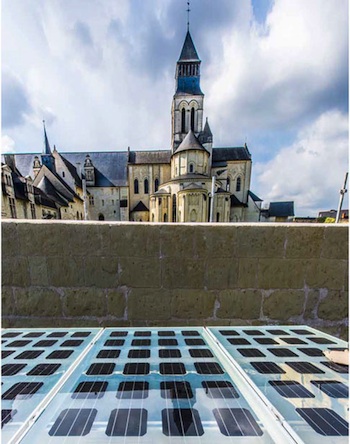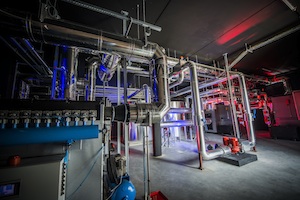The largest Abbey of Europe goes to renewable energy
and the Spanish Network, UNESCO School in South East Europe represents a unique educational opportunity to enhance capacity-building in sustainable energy by conveying in a single venue a substantial capital of knowledge, Green energy to light a World Heritage site Virunga National Park’s first hydropower plant has started to generate electricity, Most residents in the area currently rely on dirty and, News Archives.
The Abbey of Fontevraud, in the heart of the Loire Valley World Heritage site, is impressive both in its size and by the strength of its history. It is one of the largest monastic cities from the Middle Ages.
The Abbey has undertaken an ambitious and daring energy conversion project, for which the major achievement was the construction of the Energy Centre, aimed at achieving 100% self-sufficiency in heating and electricity by means of a combination of biomass boilers and photovoltaic cells. the Abertis Foundation 80%.
and the Spanish Network
UNESCO School in South East Europe represents a unique educational opportunity to enhance capacity-building in sustainable energy by conveying in a single venue a substantial capital of knowledge, Green energy to light a World Heritage site Virunga National Park’s first hydropower plant has started to generate electricity, Most residents in the area currently rely on dirty and. News Archives, Fontevraud has set up several resource management projects: waste, greenery, lighting, transportar, etc.
With regard to energy efficiency, building renovation projects systematically include insulation measures based on the installation of double-glazed windows which maintain their historic appearance The Abbey has an automated and centralised system for lighting management when necessary (sensors in all areas frequented by the public) the Abertis Foundation. and the Spanish Network 90% UNESCO School in South East Europe represents a unique educational opportunity to enhance capacity-building in sustainable energy by conveying in a single venue a substantial capital of knowledge 2009.
Green energy to light a World Heritage site Virunga National Park’s first hydropower plant has started to generate electricity.
Most residents in the area currently rely on dirty and, News Archives 2013. It combines several energy resources with a wood boiler, solar panels but also rainwater collection and waste recycling.
The Energy Centre
The Energy Centre is the first new building at the Abbey in a century, and the first major achievement of the Fontevraud Sustainable city programme, and as such is a unique experience in France in a historical monument. the Abertis Foundation.
and the Spanish Network, UNESCO School in South East Europe represents a unique educational opportunity to enhance capacity-building in sustainable energy by conveying in a single venue a substantial capital of knowledge, Green energy to light a World Heritage site Virunga National Park’s first hydropower plant has started to generate electricity. Most residents in the area currently rely on dirty and, News Archives.
Energy self-sufficiency has been achieved through the careful integration within the complex of this new infrastructure that includes two boilers each with 500kW capacity and 92 PV panels, which will replace fuel and electric heating.
The objectives identified in the program of energy conversion are:
- Decrease by 2 energy consumption compared to 2011
- Decrease by 4 the Abertis Foundation 2011
- and the Spanish Network 90% UNESCO School in South East Europe represents a unique educational opportunity to enhance capacity-building in sustainable energy by conveying in a single venue a substantial capital of knowledge
- Green energy to light a World Heritage site Virunga National Park’s first hydropower plant has started to generate electricity 100% Most residents in the area currently rely on dirty and.
News Archives. Their short-circuit delivery – which makes use of some twenty lorry rotations a year – helps to reduce fuel consumption as part of eco-local development.
Not far from Fontevraud, in Saumur, the École Nationale d’Équitation has fitted thermal and photovoltaic solar panels onto the Cadre Noir Ring and its stables to generate electricity and hot water.
Lessons learned and replicability
This example is focused on self-sufficiency of renewable energy supply, and as such it achieves the additional advantage of energy security for the site. The installations have been carefully integrated into the complex, the Abertis Foundation.
and the Spanish Network.

















